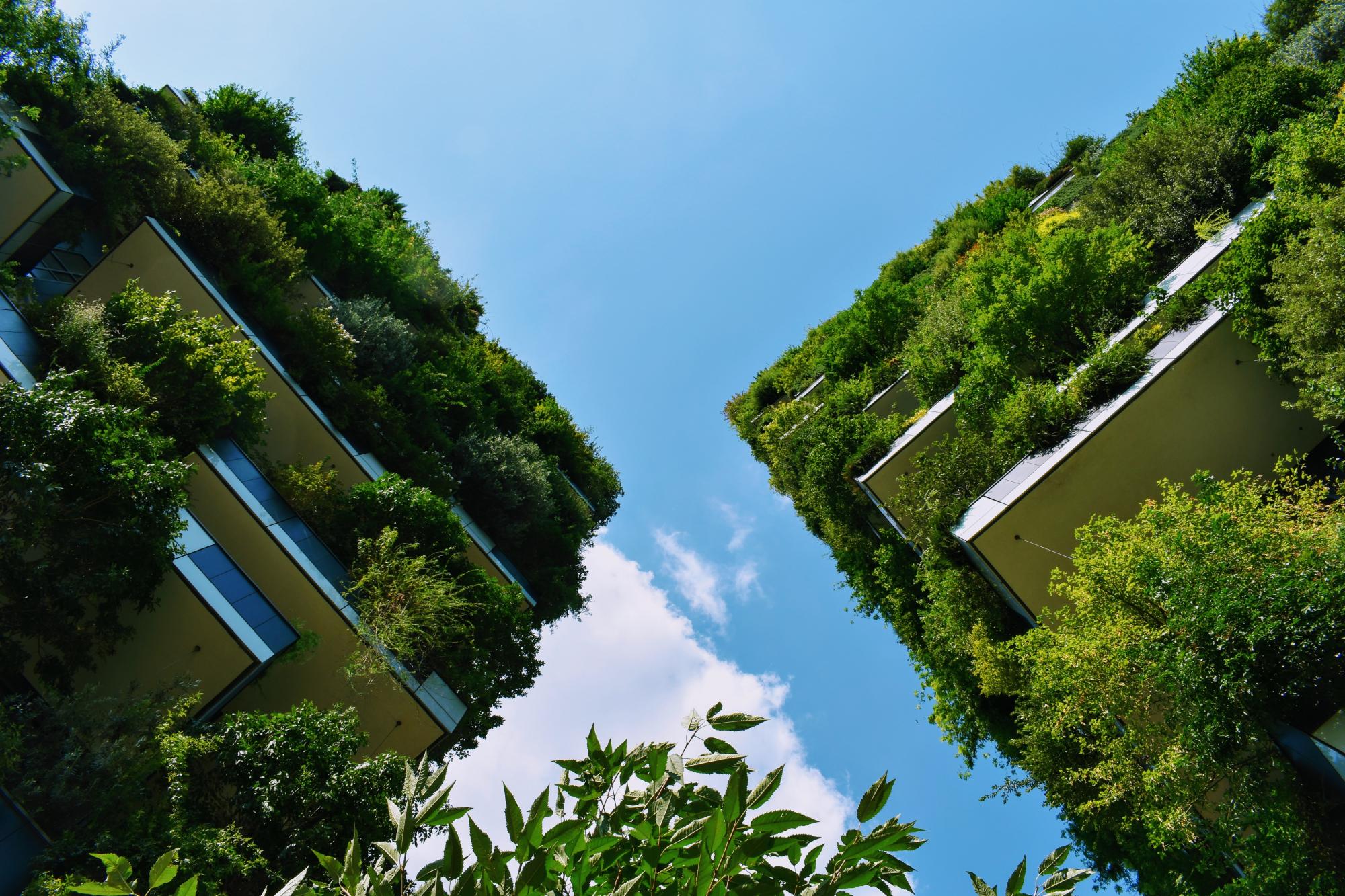As an open root space, climbing plants usually only need a small floor area. Such planting areas can be cut out in a semicircular shape directly on the facade, for example in the eaves strip of the roof overhangs (irrigation may be necessary). The city department for urban development initiated a funding programme for green facades and walls on private property in the city district of Wolbeck. It formed part of the proposed measures of the urban redevelopment programme for the district to improve its attractiveness and enhance green spaces. It included the reimbursement of up to 70 per cent of the arising material costs provided that the owner commits to maintaining the green façade for ten years. Although only three parties participated in the programme, public awareness of the multiple benefits of green space were raised (ref. 1, 2, 3 and 4).
Overview
Nature-based solution
- Nature on buildings (external)
- Green walls or facades
- Other
Key challenges
- Climate action for adaptation, resilience and mitigation (SDG 13)
- Climate change adaptation
- Green space, habitats and biodiversity (SDG 15)
- Habitat and biodiversity conservation
- Green space creation and/or management
- Environmental quality
- Air quality improvement
- Noise reduction
- Cultural heritage and cultural diversity
- Protection of historic and cultural landscape/infrastructure
Focus
Project objectives
Implementation activities
Climate-focused activities
Climate change adaptation:
- Increase or improve urban vegetation cover to help reduce outdoor temperature
- Implement green walls or roofs to lower indoor temperature and provide insulation
Biodiversity conservation or restoration-focused activities
Biodiversity conservation:
- Protect and enhance urban habitats
- Preserve and strengthen existing habitats and ecosystems
- Create new habitats
- Reduce negative impacts and avoid the alteration/damage of ecosystem
- Protect species
- Undertake specific measures to protect species
- Means for conservation governance
- Public engagement
- Capacity building
Main beneficiaries
- Citizens or community groups
Governance
Management set-up
- Government-led
Type of initiating organisation
- Local government/municipality
- Non-government organisation/civil society
- Citizens or community group
Participatory approaches/ community involvement
- Co-planning (e.g. stakeholder workshops, focus groups, participatory mapping)
- Dissemination of information and education
- Consultation (e.g. workshop, surveys, community meetings, town halls)
- Joint implementation (e.g. tree planting)
- Co-management/Joint management
- Citizen oversight (e.g. boards, advisory)
Details on the roles of the organisations involved in the project
Project implemented in response to ...
Financing
Total cost
Source(s) of funding
- Public national budget
- Public regional budget
- Public local authority budget
Type of funding
- Earmarked public budget
- Direct funding (grants, subsidies, or self-financed projects by private entities)
Non-financial contribution
- Provision of labour
- Citizens (e.g. volunteering)
Impacts and Monitoring
Environmental impacts
- Climate change
- Lowered local temperature
- Environmental quality
- Improved air quality
- Reduced noise exposure
- Water management and blue areas
- Improved stormwater management
- Green space and habitat
- Increased green space area
- Increased number of species present
- Enhanced support of pollination
Economic impacts
- Unknown
Socio-cultural impacts
- Social justice and cohesion
- Improved access to urban green space
- Increased involvement of locals in the management of green spaces
Type of reported impacts
Presence of formal monitoring system
Presence of indicators used in reporting
Presence of monitoring/ evaluation reports
Availability of a web-based monitoring tool
References
2. Hasenkamp, A. (2015). ‘Wenigstens einer mehr: Fassaden- und Mauerbegrünung im Wigbold’, Münster-Wolbeck, October. Available at: Source link (Accessed 10 August 2020)
3. n.a. (2015). ‘Angebot für Fassadenbegrünung hat Anlaufschwierigkeiten. Fördergelder werden kaum abgerufen’, Westfälische Nachrichten, 20 February. Available at: Source link (Accessed 10 August 2020)
4. Stadt Münster. (2016). Stadträume gestalten Entwicklungskonzept Wolbeck-Zentrum: Städtebauförderungsprogramm ‘Aktive Stadt- und Ortsteilzentren’. Available at: Source link (Accessed 10 August 2020)
5. Stadt Münster Amt für Stadtentwicklung / Stadtplanung / Verkehrsplanung. (2014). Entwicklungskonzept WOLBECK - ZENTRUM. Städtebauförderprogramm „Aktive Stadt- und Ortsteilzentren“. Münster. Available at: Source link (Accessed 10 August 2020)
6. Stadt Münster Presse- und Informationsamt. (2014). Mehr Grün für Wolbecks Fassaden und Mauern. Stadt informiert über Fördermittel / Entwicklungskonzept für ein attraktives Ortszentrum. Available at: Source link (Accessed 10 August 2020)
7. Taraba, S. (2017). Fassadenbegrünung – Alles aus einer Hand. Available at: Source link (Accessed 10 August 2020)
8. Stadt Münster Amt für Grünflächen Umwelt und Nachhaltigkeit. (2015). Klimawandelanpassungskonzept Münster. Münster. Available at: Source link (Accessed 10 August 2020)
9. Bundesministerium fuer Umwelt, Naturschutz, Bau und Reaktorsicherheit. (2016). Aktive Stadt- und Ortsteilzentren. Praxis. Muenster Innenstadt. Available at: Source link (Accessed 10 August 2020)
